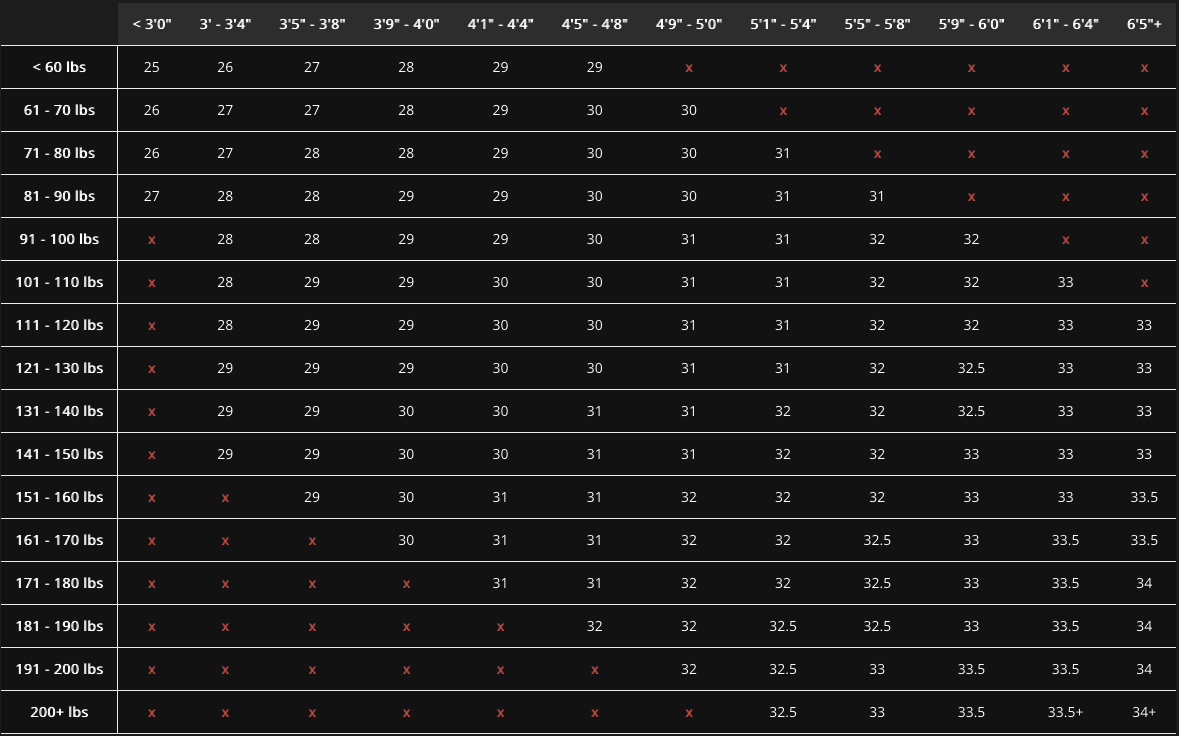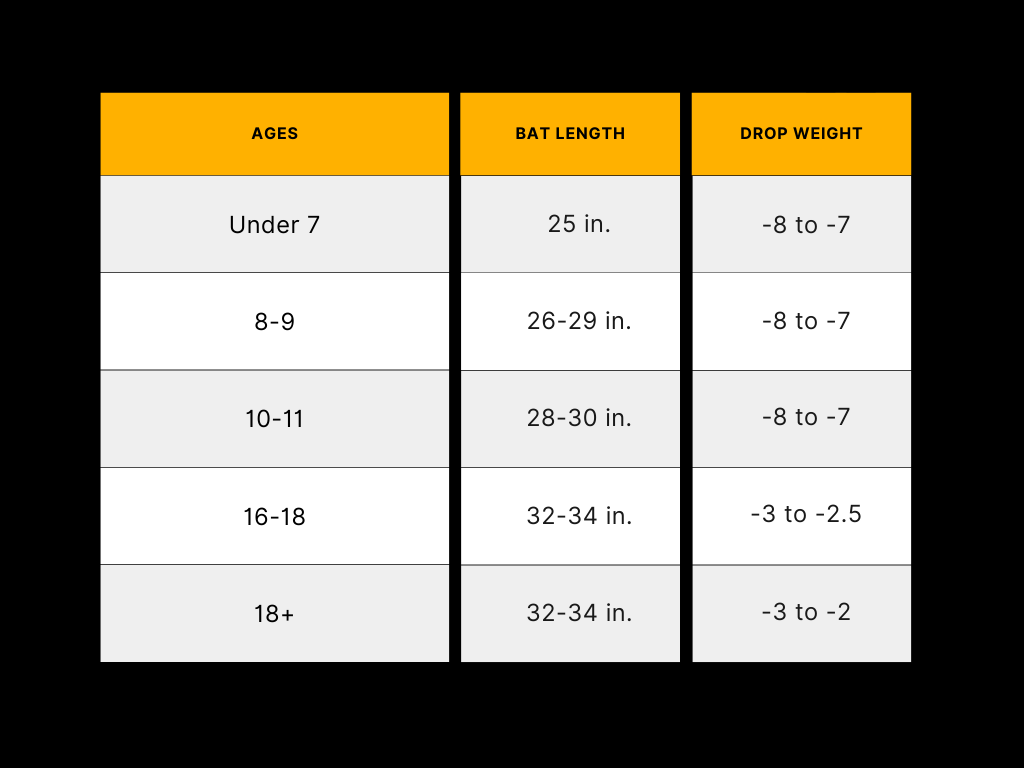At Phoenix Bats, we know the right bat with the right wood makes all the difference. In order to select the right bat, you need to determine the proper size for yourself or your player.
Hitters today have many style options to choose from when selecting a bat. Despite this, the basics of choosing the right size wood bat is fairly simple...if you go about it the right way.
Below are five quick tips to help you properly size a baseball bat.
Check the Rule Book
A great place to start when choosing a bat size is to check out what is approved for your particular league. Most leagues follow the USA Baseball’s Bat standard (USABat) regulations as it is the national governing body for the sport of baseball in the US. If the “bat of your dreams” doesn’t meet your league’s basic requirements for your age, you can rule it out right up front and save yourself a lot of time and money.
For example, back in 2018, new USABat regulations went into effect that allowed hitters of all ages to use bats up to 2 5/8 inches in barrel diameter. These standards can be quite strict and not all leagues go by USABat regulations, so it pays to check them out before you purchase your bat.
Fortunately, all Phoenix wood baseball bats are USABat compliant, since they’re single piece wood bats. Thus, no USABat stamp is even required, per USABat rule 27.
Make it Proportionate
Aside from swing ability, balance and natural ability, one of the most important aspects of being able to crush a pitch is making sure you select the proper bat size. Sizing a baseball bat generally involves determining the proper length of your lumber based on your height and weight, with age being a secondary consideration.
Here are some general guidelines to follow that will help you get started on the right path to measuring your baseball bat.
1.Easy Sizing Chart: As experts in precision wooden bat crafting, we have developed the bat sizing chart below to help you determine the proper length of your bat, proportionate to your height and weight.

2. Wingspan Check:
After measuring your height and weight, find where the height column and the weight row intersect on the chart. That is the proper bat length recommendation for you or your hitter.
Next, begin by placing the knob of the bat at the center of your chest and extend the bat out parallel to your outstretched arm. If you can easily grip the barrel of the bat in this position, the bat is “in the ballpark” to being the length for you. This is an old school way to determine your personal bat size, but as a general rule is a solid "hands-on" way to measure.
Don't have bats in hand to check? Just measure from the middle of your chest to the middle of your palm. That's a solid way to hone in on the suggested length of your wood bat.
3. Resting Grab:
Another "hands-on" method to determine the proper length of your bat is to stand with the bat alongside your leg with the barrel tip touching the ground. If you can grip the handle of the bat in a normal standing position (without reaching for it), then it’s pretty close to being the right size. Just to be sure, try swinging a size or 2 up and down to see if they feel better).
4. Watch Your Weight:
The “drop weight” of a bat is the difference between the bat’s length in inches and the bat’s weight in ounces. Sometimes known as the “minus” or “drop,” determining the ideal drop ratio of your bat is one of the most crucial factors in developing a proper swing technique. Why? A bat of the wrong weight can really destroy your swing.
Youth bats for ages 11 and under should be a -7 to -8 drop weight. The 12-13-year-old should be swinging a -5 drop weight (along with a full size 2.5" barrel). And for high school and up, a -3 or heavier drop weight is required. As a heads up, a power hitter's bat for a standard size bat rarely exceeds a -2 drop weight. The weight will increase the closer the number is to 0. For example, a -3 drop weight bat is lighter than a -2 drop weight bat.
So how do you find the drop weight of a bat if it’s not listed? Check out the example below, and do the math:
[Bat weight in ounces] - [Bat Length in inches] = Drop Weight
A 25-ounce bat measuring 30 inches long has a drop weight of -5
Conversely, if the drop weight is listed but not the weight, you can figure the weight by:
[Bat Length in inches] - Drop Weight = [Bat weight in ounces]
A 30-inch long bat with -5 drop weight = 25 ounces
Find Common Ground
At Phoenix, we get a lot of questions about common bat sizes based on a hitter’s age and/or grade level. Questions like “What size bat do I need for high school?” or “What size bat should a ten-year-old use?” are commonly asked.
That’s a great place to start looking, and the answer is easy. Check out the chart below to get a general idea of typical drop weights and bat lengths based upon age level.
Some drop weights will vary based on the league you are playing in, so be sure to check before you purchase your bat. Regardless, with Phoenix Risk-Free Guarantee, we've got you covered if you order the wrong bat.

For a more precise measurement of length based on age, refer to section 1 above.
Put It All Together
When you consider these great tips and formulas to determine how to size a baseball bat, you need to keep in mind they are just starting points. Most experts agree what really matters most is finding a bat size and weight you feel most comfortable swinging.
If you are new to a wood bat and are swinging a metal bat now, we always recommend sticking with whatever length you swing in the metal bat. In this way, the great lessons and form that only come from swinging wood get transferred back to the metal bat at the same point on the bat to maximize power and hits.
Coupling these suggestions with the right wood in a properly weighted bat should put you well on your way to finding the perfect youth, high school, and adult wood bat. If you still need help, we’ve made it easy with these quick online resources. Check them out today:

